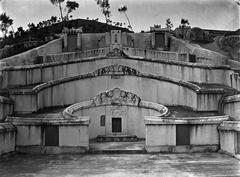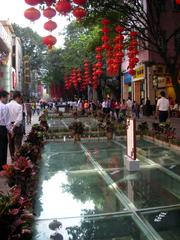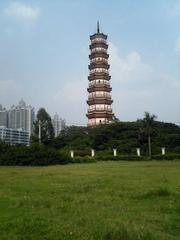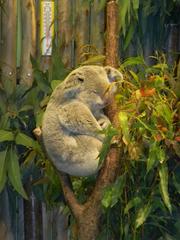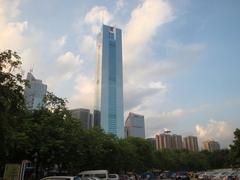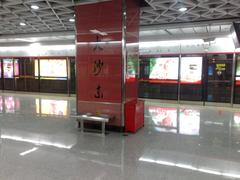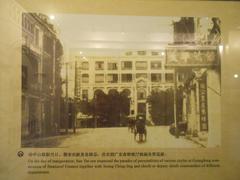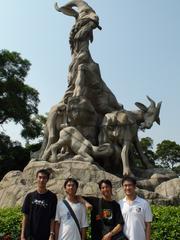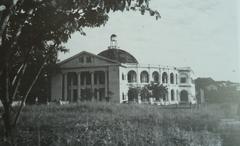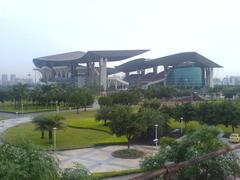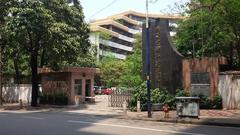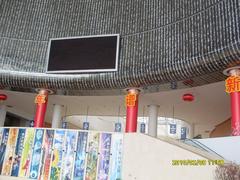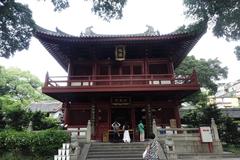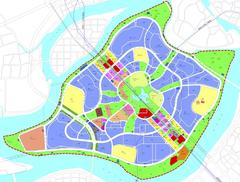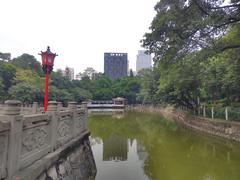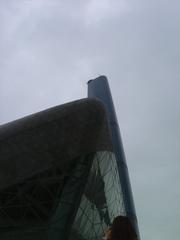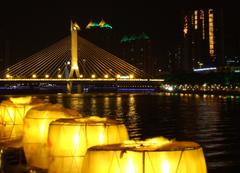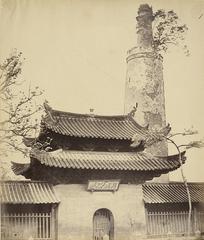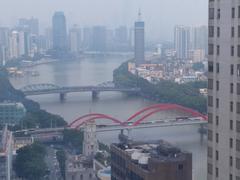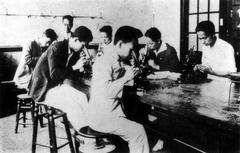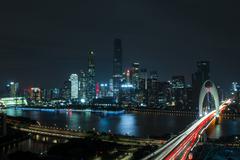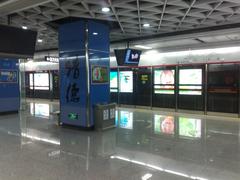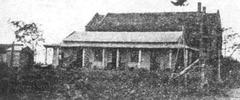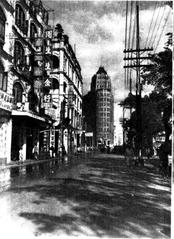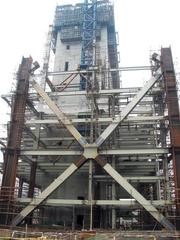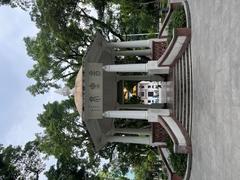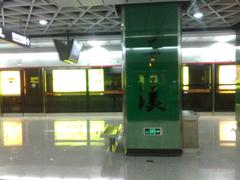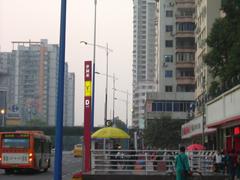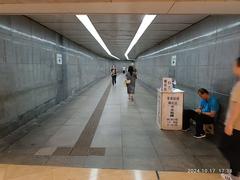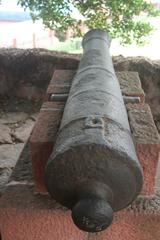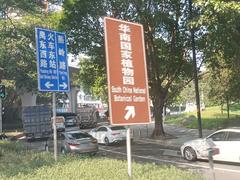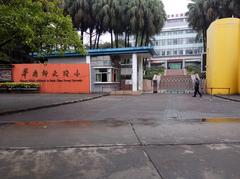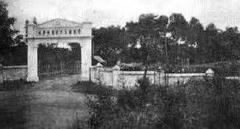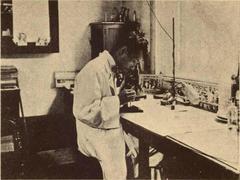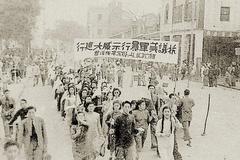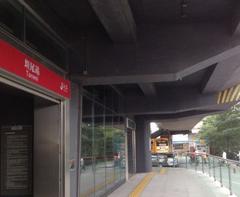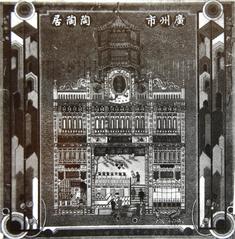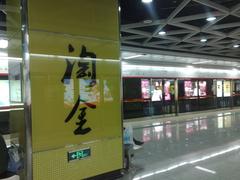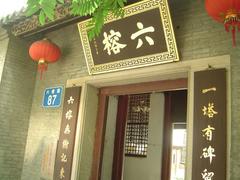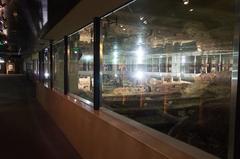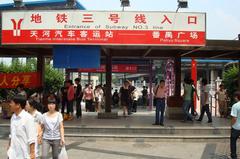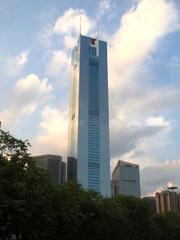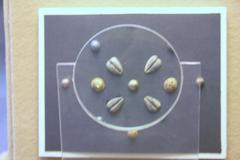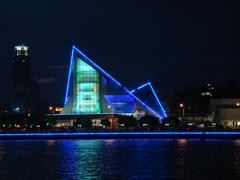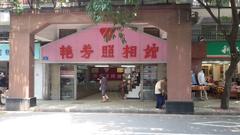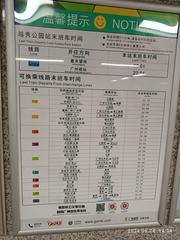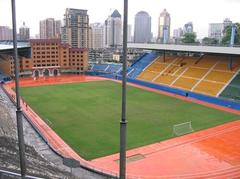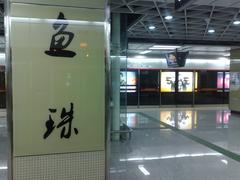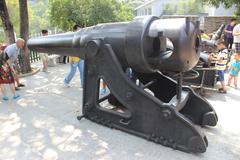
Dafo Temple Guangzhou: Visiting Hours, Tickets, and Historical Guide
Date: 04/07/2025
Introduction
Dafo Temple (大佛寺), or the Great Buddha Temple, stands as one of Guangzhou’s most significant Buddhist landmarks. Nestled in the bustling Yuexiu District, this ancient temple is a living testament to the city’s spiritual devotion, architectural mastery, and cultural resilience, spanning over a millennium since its founding in the Southern Han Dynasty (917–971 CE). With its iconic bronze Buddha statues, exquisite Lingnan architecture, and vibrant community life, Dafo Temple offers an oasis of tranquility amid Guangzhou’s urban landscape. This guide provides detailed historical context, highlights its artistic and architectural features, and presents all practical information—such as visiting hours, ticketing, accessibility, and nearby attractions—ensuring a complete and rewarding visit for history enthusiasts, spiritual seekers, and cultural explorers alike (Guangzhou Government Tourism Portal; China Highlights).
Table of Contents
- Introduction
- Historical Overview
- Architectural and Artistic Highlights
- Modern Era: Preservation and Community Role
- Practical Visitor Information
- Visitor Etiquette and Travel Tips
- Frequently Asked Questions (FAQ)
- Conclusion
- References
Historical Overview
Foundations and Early Significance
Dafo Temple’s history begins in the Southern Han Dynasty, when Liu Yan, the founding king, established a sacred site originally named Xinzang Temple. Its location in Lingnan—modern-day Guangdong—reflected a unique blend of Buddhist philosophy and Chinese cosmology. The temple was soon recognized as an influential spiritual and cultural center, benefiting from royal patronage and serving as a hub for religious and scholarly activities (Guangzhou Government).
Dynastic Transformations and Rebirth
Ming and Qing Periods
During the Ming Dynasty (1368–1644), the temple underwent major expansion and was renamed Longzang Temple. Its growing religious significance was matched by its flexible civic use, at one point serving as a Commissioner Office. In the early Qing Dynasty, a devastating fire destroyed much of the structure. Reconstruction began in 1663 under Shang Kexi, the Pingnan King, whose donations enabled the temple’s rebirth. The rebuilt complex seamlessly merged imperial grandeur with regional Lingnan features, producing a distinctive architectural style (Guangzhou Government).
Architectural Expansion and Civic Role
Under Emperor Yongzheng (1733), Dafo Temple was designated as an official venue for governmental proclamations. The addition of new halls and pavilions—such as the Xuanyu Pavilion, Weituo and Jialan Halls, and the Zen Forest—expanded its cultural and religious functions, securing its place among Guangzhou’s five great Buddhist temples.
Architectural and Artistic Highlights
Dafo Temple’s layout exemplifies classical Chinese Buddhist temple design, centered on a three-axis arrangement:
- Shanmen (Mountain Gate): Marks the main entrance, flanked by the historic Bell and Drum Towers.
- Heavenly Kings Hall: The first major hall along the central axis.
- Grand Hall (Daxiongbaodian/Mahavira Hall): Houses three monumental bronze Buddha statues—Shakyamuni, Amitabha, and Maitreya—each 6 meters tall and weighing around 10 tons. These statues, cast during the Ming and Qing dynasties, are among the largest in southern China (China Highlights; Travel China Guide).
Other highlights include:
- Hall of Guardian Deities: Features statues of Dharma protectors.
- Scripture Repository: Houses rare sutras and a 1,300-year-old Blood Sutra.
- Hall of the Sixth Patriarch: Dedicated to Zen Master Huineng.
- Hall of Five Hundred Arhats: Displays 500 unique arhats statues.
- Hongfa Building: A modern addition for exhibitions and panoramic views (etripchina.com; deepchinatravel.com).
The temple is renowned for its intricate wooden carvings, vibrant murals, and tranquil courtyards adorned with bonsai, koi ponds, and stone paths—providing a serene space for meditation and reflection (travelurchina.com; guangzhouinsider.info). In the evenings, golden illumination brings a magical ambiance reminiscent of scenes from classic animation (etripchina.com).
Modern Era: Preservation and Community Role
Recognized as a Municipal Historical and Cultural Heritage Protection Unit, Dafo Temple has undergone significant restoration, especially after the Cultural Revolution (CGTN). Modern adaptations include Guangdong’s first Buddhist library, digital payment for offerings, and new community spaces. The temple is a center for education, interfaith dialogue, and social outreach—hosting lectures, retreats, and cultural events that attract locals and international visitors alike (Buddhistdoor Global; Guangzhou Insider).
Practical Visitor Information
Visiting Hours and Tickets
- Opening Hours: 8:00 AM – 5:30 PM (last entry at 5:00 PM).
- Admission: General admission is CNY 20 (as of June 2024), with discounts for students, seniors, and children. Entry is sometimes free outside major festivals. Some special halls or exhibitions may require additional tickets (etripchina.com).
- How to Buy Tickets: Onsite or via official online platforms.
Accessibility
- Metro: Line 6 to Beijing Lu Station (Exit B), then a 5-minute walk.
- Buses: Several routes stop near Beijing Road/Huifu West Road.
- Wheelchair Access: Main halls and restrooms are accessible; some areas have steps (guangzhouinsider.info).
Guided Tours and Events
- Guided Tours: Available in Mandarin and English for an extra fee. Book onsite or through travel agencies.
- Special Events: Major Buddhist festivals (Vesak, Lunar New Year, Mid-Autumn) feature elaborate rituals and decorations.
Facilities and Dining
- Library: Extensive Buddhist literature and multimedia resources.
- Vegetarian Dining: The Pu Jue Tower provides a buffet; other eateries nearby offer vegetarian and Cantonese cuisine (deepchinatravel.com).
- Gift Shop: Sells incense, souvenirs, and crafts.
- Restrooms: Clean and accessible.
Nearby Attractions
- Beijing Road Pedestrian Street: For shopping, dining, and historic road layers (Trip.com Moments).
- Guangxiao Temple: Another major Buddhist temple, 1.5 km away.
- Museum of the Mausoleum of the Nanyue King: Features a 2,000-year-old royal tomb and artifacts.
Visitor Etiquette and Travel Tips
- Dress Code: Modest attire; cover shoulders and knees.
- Shoes: Remove before entering main halls.
- Photography: Permitted in courtyards, restricted in prayer halls. Always observe posted signs.
- Behavior: Keep noise to a minimum, avoid interrupting ceremonies.
- Donations: Support temple upkeep via donation boxes or light offerings.
- Hydration: Bring water; Guangzhou is humid.
Frequently Asked Questions (FAQ)
Q: What are Dafo Temple’s opening hours?
A: 8:00 AM to 5:30 PM daily (last entry 5:00 PM).
Q: How much is admission?
A: CNY 20 (discounts for students/seniors). Sometimes free outside festivals.
Q: Is Dafo Temple wheelchair accessible?
A: Yes, in most main areas.
Q: Are guided tours available?
A: Yes, in Mandarin and English. Book onsite or with local agencies.
Q: Can I take photos?
A: Yes, outdoors; restricted in main halls.
Q: What’s the best time to visit?
A: Early mornings on weekdays for a peaceful experience.
Conclusion
Dafo Temple is a living monument to Guangzhou’s Buddhist heritage, blending ancient tradition with modern community life. With its awe-inspiring statues, serene gardens, and rich historical legacy, it remains a must-visit for anyone seeking spiritual tranquility or a deeper understanding of the city’s cultural tapestry. Plan your visit thoughtfully—check opening hours and ticketing, respect local customs, and explore the vibrant surroundings for a full day of cultural discovery.
For travel updates, guides, and exclusive offers, download the Audiala app and follow us on social media. Enhance your Guangzhou journey with Dafo Temple’s timeless beauty and enduring significance.
References
- Guangzhou Government Tourism Portal
- China Highlights
- Travel China Guide
- Etrip China
- Buddhistdoor Global
- Guangzhou Insider
- CGTN
- Trip.com Moments
- Deep China Travel
- Travelur China







